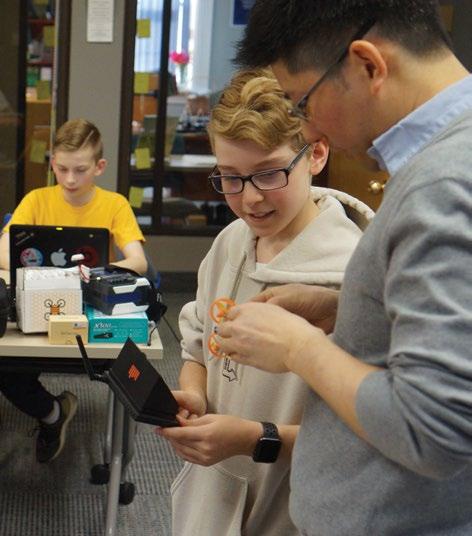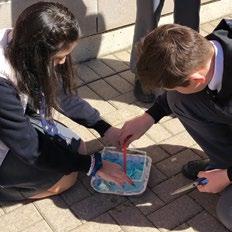
3 minute read
Innovation through iteration


Advertisement
In Middle School the focus is on providing students with opportunities to explore through interactive, hands-on projects. Through the Global Leadership Program, in conjunction with the curriculum, students can pursue what they’re passionate about while attaining the skills needed to be successful in life.
For instance, during the Middle School’s Pillar Pursuits days, students could choose from a number of workshops including YouTubing, game design, shoe design, archery and survival, movement and mindfulness, drones, arts and crafts, and cooking. What made this experience particularly unique is that students selected the options themselves and were given the opportunity to not only participate but to lead certain topics of personal interest.

Gordon Chiu, the school’s technology integration specialist, was the academic advisor to the session on drones led by Grade 7 students Thomas Bianco and Alex Cooper. On the first Pillar Pursuit day, Thomas and Alex not only gave the presentation to lead off the workshop, they also created and led the interactive elements including building the drones.
“On the subsequent workshop day, students brought in their own drones so that they could design and 3D-print a clamping mechanism onto their drones so they could attempt to carry items. Of course there was some drone flying as well,” explains Chiu.
In addition to the off-timetable days, the school’s curriculum ensures hands-on learning is integrated whenever possible. For instance, Grade 8 science teacher Chris Coyne recently taught a section on cells and the different ways things move in and out of a cell. To reinforce the lesson and extend the learning, he took the class outside to replicate this type of system using bubble solution and straws.
“One group dropped the straw in the solution by accident and then noticed it went right through the bubble wall,” Coyne explains. “When we talked about simple diffusion and that it has to be the same type of material so the lipids go through, you see that instant connection with the students—‘oh it’s the same, it goes right through, but if it’s not the same it will pop the bubble or your cell membrane won’t obviously go through.’”
In addition to science, students can opt to take a design and innovation course, also taught by Coyne, where the creative and engineering processes are intertwined. Students in this course have built and flown paper drones and even studied how the pressure pads in soles activate lightup shoes. The course encourages students to tinker, to think critically and provides design challenges that go beyond what is offered in Grade 8 science.
“What I like best is that we aren’t told how to do things—we get a premise for a project and we get to test things until they work,” says Grade 8 student Christopher Squires. “One of the most interesting things I’ve made was a card using lights and wire, so that when we pushed a button in the corner of the card, the lights would turn on. Since this was around Christmas time, I made all of the corners of a present light up.”
In the future, Coyne is looking to help students to create an Altoid tin flashlight, where they create a circuit to harness energy that not only powers the light but can recharge in the sun. It’s handson projects like these that really capture the imaginations of the students while at the same time building their overall resilience.
“One thing I have really noticed is they do get frustrated when they are not successful the first time, so helping them through the process of ‘that is the learning process and how we prototype’ and really emphasizing that the prototype is just one iteration of it, and ‘how can we actually change that to make it better?’”






